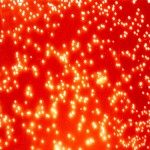Link to Pubmed [PMID] – 30371343
Genome Med 2018 10;10(1):77
BACKGROUND: Klebsiella pneumoniae is a recognised agent of multidrug-resistant (MDR) healthcare-associated infections; however, individual strains vary in their virulence potential due to the presence of mobile accessory genes. In particular, gene clusters encoding the biosynthesis of siderophores aerobactin (iuc) and salmochelin (iro) are associated with invasive disease and are common amongst hypervirulent K. pneumoniae clones that cause severe community-associated infections such as liver abscess and pneumonia. Concerningly, iuc has also been reported in MDR strains in the hospital setting, where it was associated with increased mortality, highlighting the need to understand, detect and track the mobility of these virulence loci in the K. pneumoniae population.
METHODS: Here, we examined the genetic diversity, distribution and mobilisation of iuc and iro loci amongst 2503 K. pneumoniae genomes using comparative genomics approaches and developed tools for tracking them via genomic surveillance.
RESULTS: Iro and iuc were detected at low prevalence (< 10%). Considerable genetic diversity was observed, resolving into five iro and six iuc lineages that show distinct patterns of mobilisation and dissemination in the K. pneumoniae population. The major burden of iuc and iro amongst the genomes analysed was due to two linked lineages (iuc1/iro1 74% and iuc2/iro2 14%), each carried by a distinct non-self-transmissible IncFIB virulence plasmid type that we designate KpVP-1 and KpVP-2. These dominant types also carry hypermucoidy (rmpA) determinants and include all previously described virulence plasmids of K. pneumoniae. The other iuc and iro lineages were associated with diverse plasmids, including some carrying IncFII conjugative transfer regions and some imported from Escherichia coli; the exceptions were iro3 (mobilised by ICEKp1) and iuc4 (fixed in the chromosome of K. pneumoniae subspecies rhinoscleromatis). Iro/iuc mobile genetic elements (MGEs) appear to be stably maintained at high frequency within known hypervirulent strains (ST23, ST86, etc.) but were also detected at low prevalence in others such as MDR strain ST258.
CONCLUSIONS: Iuc and iro are mobilised in K. pneumoniae via a limited number of MGEs. This study provides a framework for identifying and tracking these important virulence loci, which will be important for genomic surveillance efforts including monitoring for the emergence of hypervirulent MDR K. pneumoniae strains.

